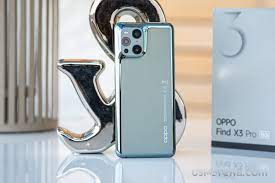In the dynamic world of smartphones, Oppo and OnePlus have emerged as significant players, offering consumers a range of innovative devices. Interestingly, both brands belong to the same parent company, BBK Electronics. This article delves into the nuanced differences between Oppo and OnePlus, helping you make an informed decision when choosing your next smartphone.
Design and Build Quality:
Oppo:
Oppo devices are renowned for their sleek and stylish designs, often featuring vibrant colors and premium materials. The attention to detail in Oppo smartphones, with curved edges and slim profiles, contributes to a sophisticated aesthetic.

OnePlus:
OnePlus, on the other hand, adopts a minimalist design philosophy, focusing on clean lines and simplicity. OnePlus devices are recognized for their premium build quality, often incorporating materials like glass and aluminum for a sturdy yet refined feel.

Display Technology:
Oppo:
Oppo smartphones typically boast vivid and immersive displays. The brand often integrates advanced technologies, such as AMOLED or Super AMOLED panels, to deliver vibrant colors and deep contrasts, providing an excellent multimedia experience.
OnePlus:
OnePlus devices also prioritize display quality, frequently opting for Fluid AMOLED screens. The company is known for its high refresh rates, enhancing the overall responsiveness and smoothness of the user interface.
Software Experience:
Oppo:
Oppo’s ColorOS is the customized Android skin found on Oppo devices. ColorOS is known for its feature-rich interface and customization options, offering a visually appealing user experience.
OnePlus:
OnePlus devices run on OxygenOS, a close-to-stock Android experience with minimal bloatware. OxygenOS is celebrated for its speed, fluidity, and user-friendly design, providing a near-vanilla Android experience with useful enhancements.
Camera Performance:
Oppo:
Oppo places a significant emphasis on camera technology, with features like AI enhancements, advanced image processing, and impressive low-light performance. Oppo devices are often equipped with versatile camera setups suitable for various photography styles.

OnePlus:
OnePlus, too, prioritizes camera performance, particularly in its more recent releases. OnePlus devices are equipped with multiple lenses, and the collaboration with Hasselblad in some models underscores the brand’s commitment to delivering high-quality photography experiences.

Pricing Strategy:
Oppo:
Oppo offers a range of devices catering to different price points. The brand’s diverse lineup allows consumers to choose smartphones that align with their budget without compromising on essential features.
OnePlus:
While OnePlus has historically been associated with providing flagship-level performance at more competitive prices, recent releases have seen a shift towards the premium segment. OnePlus still delivers value for money but with a more varied pricing strategy.
Conclusion:
In the Oppo vs. OnePlus comparison, the choice between the two brands ultimately depends on individual preferences and priorities. If you value an elegant design, immersive display, and advanced camera capabilities, Oppo might be the right fit. On the other hand, if you seek a clean software experience, premium build quality, and a focus on performance, OnePlus may be more aligned with your preferences. Both brands bring something unique to the table, ensuring a diverse range of options for smartphone enthusiasts. Consider your priorities and explore the specific features of each brand’s devices to find the smartphone that best suits your needs.


